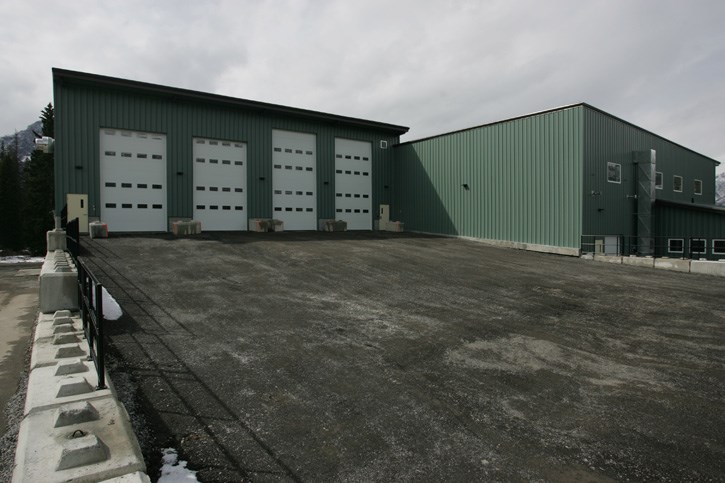CANMORE – The Town of Canmore is expanding its recycling service in 2019 to add an organic diversion program for residential and commercial properties.
The new service isn’t cheap, with a $2.9 million investment needed next year to set it up, create a pilot for residential organic diversion and begin a commercial program to divert organic waste from the food and beverage industry from the landfill.
Supervisor of solid waste services Simon Robins explained the rationale behind administration’s proposed new service for the community beginning next year.
Robins said an organic diversion program meets council’s strategic priorities of environmental sustainability by reducing the amount of garbage headed to the landfill each week, reaches municipal goals in the Town’s environmental action plan and has support in the community.
“We would look at implementing a full commercial program because that is where the majority of food waste is,” he said. “Then we would look at doing a pilot residential program and put out five residential containers.”
In 2017, Canmore sent 0.6 tonnes of garbage to the landfill for each person who calls the community home. The action plan target, pointed out Robins, was to reach 0.60 tonnes per year per person by 2015 and 0.45 tonnes by 2020.
A 2016 waste characterization study found that residential solid waste heading to the landfill contains 30 per cent organic material and commercial garbage contains 50 per cent organics. That means there is plenty of material for an organic diversion program, said Robins.
The most significant cost of the project is a $1.2 million expansion of the current waste management centre that was built in 2014 for two additional bays to process and stockpile the organic material. Solar power on the roof for $200,000, a project manager, roof reconfiguration and equipment to transfer the organic material add up to anther $1 million.
As for the infrastructure related to collection, there are five residential collection bins considered for $70,000, 100 roll carts for commercial collection for $40,000, 2,000 small food waste containers for residents at a cost of $10,000 and a $270,000 specialized collection vehicle.
The operating budget for the department includes an additional full-time position in solid waste services department in 2019 for $83,349 to deal with growth, a new position in 2020 for organics at a cost of $85,000 and in 2021 a part-time position for $42,500.
Mayor John Borrowman noted that programs like organic diversion have an up front capital cost, and a long-term operational effect.
“When we consider adding to the capital (budget), things like organics, we have to recognize that it is going to have a long-term effect on capital and increased effect on operating,” Borrowman said.
Manager of public works Andreas Comeau said the organic diversion is covered under the utility rate model.
The expectation is the additional service would require three years of increases for recycling ratepayers. In 2016, council voted to split the recycling and garbage rates for residents.
“For the next three years there are no increases on the waste side, but more on the recycling side,” Comeau said. “In order to do organic diversion we need an eight per cent increase residentially over two years with a total impact of $28 per year.”
The organic diversion program proposed as part of the budget includes five residential drop-off bins available throughout the community and a commercial separation program for local restaurants, which produce the largest amount of organics in the community.
“We have landed on this system where we go full commercial because if we are truly wanting to reduce the amount of organics that goes to the landfill … commercial has the highest volume of waste,” Comeau said.
One of the biggest issues for organic recycling, Comeua added, is contamination in the bins.
That is one of the reasons Banff has struggled with its program, which has seen only five residential bins available throughout the community for the past several years.
Originally, the idea was to use organics in the N-Viro wastewater treatment plant that uses biosolids to create a certified fertilizer product available for sale on the market.
Instead, organics are shipped outside Calgary to be composted, a different process that still creates a marketable product.
“The biggest challenge to the program will be getting people to comply and not contaminate the stream,” Fark said, adding that is why the initial launch for residential diversion only included five bins. “We do not want to do that additional investment until we get a sense of if the system works and if we can get compliance with people about the amount of contamination in the system.”
The budget included $50,000 for educational efforts, and $210,000 for resources to support implementation, dependent on a Federation of Canadian Municipalities climate change coordinator grant.
Borrowman also wanted to make sure administration approached the Town of Banff to discuss how the two parties could work together in delivering the same organic diversion objectives.
Councillor Esmé Comfort noted there is support in the community for this program, with a group called Canmore Organic Recycling (CORE) to lobby elected officials to move on the objective.




